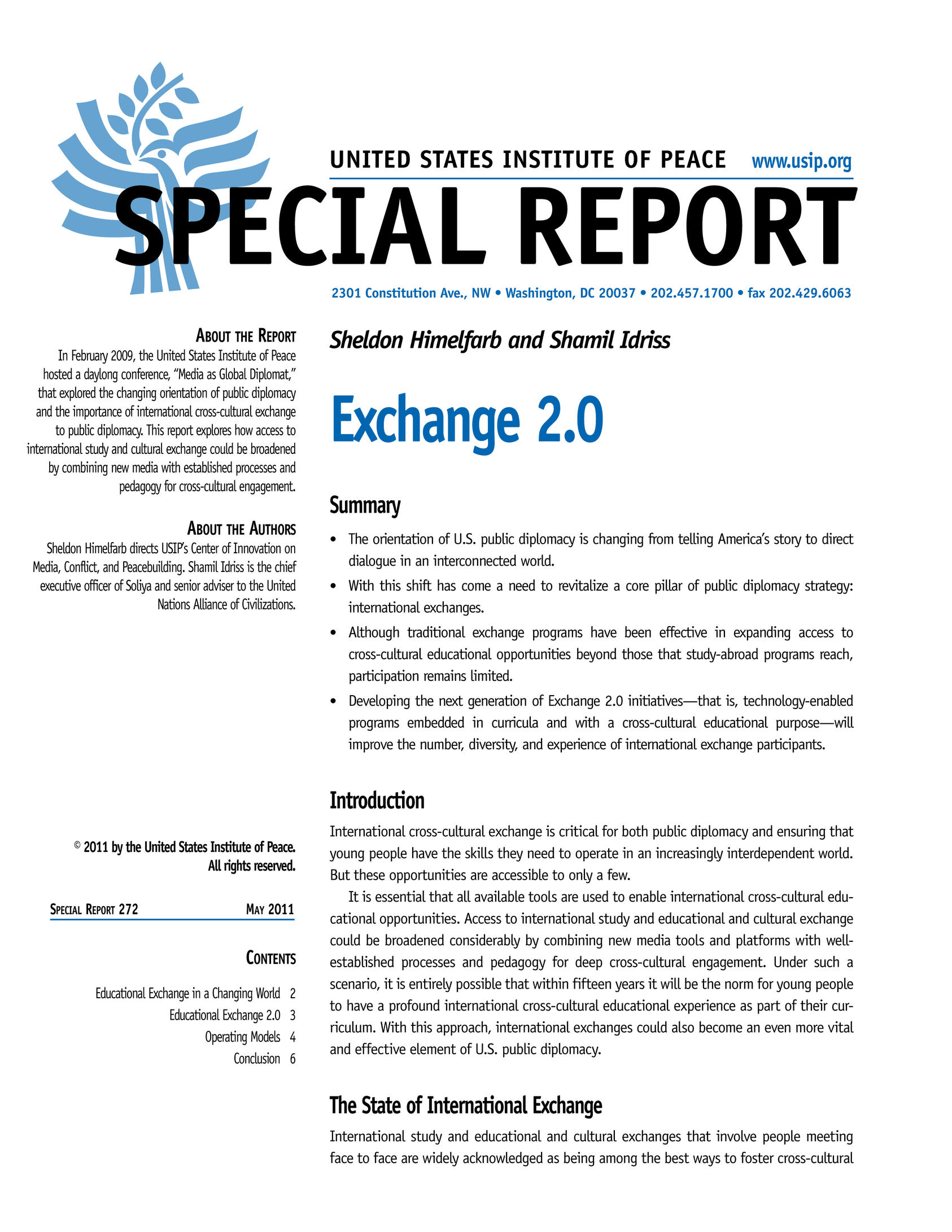In February 2009, the United States Institute of Peace hosted a daylong conference, “Media as Global Diplomat,” that explored the changing orientation of public diplomacy and the importance of international cross-cultural exchange to public diplomacy. This report explores how access to international study and cultural exchange could be broadened by combining new media with established processes and pedagogy for cross-cultural engagement.

Summary
- The orientation of U.S. public diplomacy is changing from telling America’s story to direct dialogue in an interconnected world.
- With this shift has come a need to revitalize a core pillar of public diplomacy strategy: international exchanges.
- Although traditional exchange programs have been effective in expanding access to cross-cultural educational opportunities beyond those that study-abroad programs reach, participation remains limited.
- Developing the next generation of Exchange 2.0 initiatives—that is, technology-enabled programs embedded in curricula and with a cross-cultural educational purpose—will improve the number, diversity, and experience of international exchange participants.
About the Report
In February 2009, the United States Institute of Peace hosted a daylong conference, “Media as Global Diplomat,” that explored the changing orientation of public diplomacy and the importance of international cross-cultural exchange to public diplomacy. This report explores how access to international study and cultural exchange could be broadened by combining new media with established processes and pedagogy for cross-cultural engagement.
About the Authors
Sheldon Himelfarb directs USIP’s Center of Innovation on Media, Conflict, and Peacebuilding. Shamil Idriss is the chief executive officer of Soliya and senior adviser to the United Nations Alliance of Civilizations.